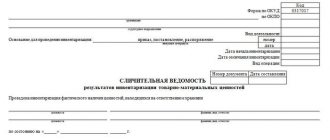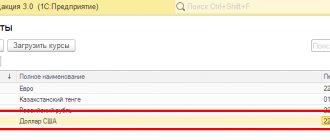Binary system and the essence of double entry
At first glance, concepts such as the binary system and accounting have little connection. Of course, programming is based on the binary system, thanks to which we have the opportunity to use computers, and accounting principles that have not changed for 5 centuries are based on double entry. But still, what do just two numbers “0” and “1” have in common with the millions, and even billions, that the average accountant accounts for? It's simple - the inviolability of principles. Many believe that the principle of double entry in accounting has long since become obsolete, criticize the complexity of this process for a person who does not have special knowledge, and say that it is necessary to change the existing system. But they cannot offer anything else of equal value.
How, for example, can you show in detail that the 500,000 rubles that the company transferred from its current account to the supplier are an advance, without resorting to long textual explanations? And how to understand these explanations if there is not one or 10 operations, but thousands? And how to find a mistake if it suddenly happens? And most importantly, how long will it take? And the accountant will record such a transaction very succinctly and simply:
Dt 60.2 Kt 51,500,000
And anyone familiar with these concepts will immediately understand what we are talking about. Moreover, if the supplier starts shipping materials in parts, nothing will be lost either, because each such one-time delivery will be formalized as follows:
- Dt 10.1 Kt 60.1 100,000 - materials received;
- Dt 60.1 Kt 60.2 100,000 - advance credited.
And we have not yet analyzed the situation when VAT is hidden in the price of these materials, which must also be indicated separately. Of course, modern technologies would make it possible to streamline these operations in another way, but just some 20 years ago such possibilities did not yet exist, but double entry has long ensured order in calculations.
Double entry in accounting
Subscribe to our YouTube channel!
Meaning of Accounting Accounts
Every step in the work of any company, be it the purchase and sale of goods, the receipt of fixed assets, the calculation and payment of wages, the payment of taxes, etc. is a chain of individual business transactions. Any, even the most insignificant mistake can lead to a violation of the entire accounting system. Therefore, the task of an accountant is to track, record and document any activities of the company. Accounting is used for this purpose in accounting.
Accounting accounts. Grouping
Some accounts have features of both active and passive accounts. This depends on the specific situation. Here is a typical example: at the time of shipment of goods to the buyer, we incur a debt from the latter to our company, which he is obliged to pay within a certain period specified in the contract. It turns out that this is our property, only in the future. This will be reflected in accounting according to Dt account 62.
When the buyer repays the debt, the decrease in the account must be shown according to Kt.
In this example, account 62 acts as the active account.
However, in practice, there are cases when we owe the buyer, and the situation becomes the opposite. For example, when an advance is received from a counterparty. In this case, the score 62 increases by Kt
.
And after the goods are shipped, our obligations to the buyer will decrease, which should be shown on the invoice
.
This example reveals the characteristics characteristic of a passive account. Hence the name - active-passive accounts
.
Now our task is to figure out how they work.
Rules for active and passive accounts
Watch the excerpt
from
a video course
in which my colleague explains in detail and very clearly the structure and operation of accounts.
Thus, the action of counting is characterized by 2 types of movement
: increase and decrease.
Double entry.
Correspondence of accounts. Accounting entries So, before carrying out each operation in accounting, you first need to establish the accounting accounts directly involved in it, and at the same time the scheme of their work. Next, we simultaneously enter the transaction amount as a credit to one account and a debit to another. This method of accounting is called Double Entry
.
This rule is regulated by Federal Law dated December 6, 2011 No. 402-FZ “On Accounting”. Clause 3 of Article 10 of this law states: “ Accounting is carried out through double entry in accounting accounts, unless otherwise established by federal standards
.”
This entry is called an accounting entry.
.
The relationship between accounts that arises when preparing an accounting entry is correspondence of accounts, and the accounts appearing in the record are correspondent
.
Examples of double entry
To consolidate the material, let's look at some examples: an advance payment from the customer of 25,000 rubles was received on the account.
Algorithm of actions:
1) We determine the accounts that work in this task: This is account 62 “Settlements with buyers and customers” and account 51 “Settlement accounts”.
2) Using the double entry rule, we draw up an accounting entry: Because. sch.51 is purely active, then as a general rule it will increase according to Dt
.
In this case, account 62 (active - passive) acts as a passive account, because we have a debt to the buyer, and the increase in the passive account occurs according to Kt
.
Received goods from the supplier in the amount of 20,000 rubles.
1) In this case, the following will be affected: account 41 “Goods” and account 60 “Settlements with suppliers and contractors”
2) Also, as in the previous examples, we analyze the situation: Account 41 is active, because serves to record the organization's property. Therefore, the receipt of goods is recorded according to Dt account 41
.
The movement pattern for count 60 is similar to count 62, discussed in example 1 of our article. It follows that in this operation it is characterized as a passive account
.
Consequently, the resulting debt is recorded according to CT account 60
.
15,000 rubles were withdrawn from the account to the cash register.
1) Participating accounts: account 51 “Current account” and account 50 “Cash”.
2) Let's reason: We remember that these accounts are active
.
Funds are withdrawn from the account - there is a decrease in account 51, which will be reflected in Kt account 51
.
At the same time, the money goes to the enterprise's cash desk, account. 50 increases, we will note this movement by Dt sch.
50 .
As you can see, the peculiarity of double entry
is to help us evaluate and characterize absolutely any actions of the company’s economic activity.
The current article is just a small overview of individual “pieces” of accounting. Choose a course for beginning accountants “Accounting and Taxation for Beginners +1C 8.3” in full-time or distance learning to fully acquire the knowledge to work as a chief accountant of a small enterprise.
The course is unique, because the learning process is carried out in the form of an internship in a real company simultaneously with theory. In-depth practice with documents from “0” to balance. Classes are taught by experienced teachers - practicing accountants
.
Check how carefully you have studied the article, take the test:
1. An increase in the organization’s property is reflected:
— by Debit of the active account — by Credit of the active account
2. Passive accounts are used to account for:
— property (funds) of the organization — sources of property formation
3. What does the double entry method mean:
— Balance sheet asset is equal to Balance sheet liability — Reflection of a business transaction by Debit of one account and Credit of another
| Author of the article: Matasova Tatyana Valerievna - expert on tax and accounting issues |
What does the law say?
Before the introduction of federal standards, companies are required to follow the accounting rules approved during the period of validity of the Federal Law of November 21, 1996 No. 129-FZ “On Accounting”. This is stated in paragraph 1 of Article 30 of the Federal Law of December 6, 2011 No. 402-FZ “On Accounting”. In other words, PBUs are still in effect (of course, to the extent that does not contradict the new law). Moreover, in 2013, making changes to the old by-laws is impossible, since the Ministry of Finance of Russia no longer has the authority to do this (Clause 1, Article 23 of Law No. 402-FZ). For this reason, the addition to PBU 1/2008 was approved in 2012.
Law No. 129-FZ, although it did not allow accounting without the use of double entry (clause 4 of article 8), still provided for a simplified accounting system for small businesses (clause 2 of article 5). True, it was never created in its entirety. And a simple system has just been announced. It is not provided with teaching materials.
Let us add that Law No. 402-FZ (clause 3 of Article 10) allows for accounting without double entry, if this is provided for by federal standards. But now PBU 1/2008 provides this right.
Simple system
Accounting using a simple system is nothing new to accountants - they have been keeping it on off-balance sheet accounts for a long time. This is stated in the Instructions for using the Chart of Accounts (approved by order of the Ministry of Finance of Russia dated October 31, 2000 No. 94n). True, the receipt and disposal of off-balance sheet assets does not have a direct impact on the financial result of the company.
Tax accounting is also maintained without the use of double entry: for income tax - in analytical tax accounting registers (Article 314 of the Tax Code of the Russian Federation), in the case of using a simplified taxation system - in the Book of Accounting for Income and Expenses (Article 346.24 of the Tax Code of the Russian Federation).
Meanwhile, the new simple system should ensure the preparation of generally established reporting forms - a balance sheet and a statement of financial results. It must be admitted that double entry was precisely aimed at solving this problem.
We emphasize: a simple system does not imply a refusal to use traditional accounts as such. That is, accounting areas are still regulated, accounting objects are defined in Article 5 of Law No. 402-FZ, and the rules for recognizing, evaluating and writing off objects from accounts are established in PBU. The condition of matching income and expenses remains in force (paragraph 2 of clause 19 of PBU 10/99 “Expenses of the organization”).
The only innovation is that accounting for each account is kept separately. However, this is not always possible. There are a number of calculation indicators that cannot be independently determined. This applies to the cost of work in progress or finished products, as well as the financial result for the reporting period.
In the absence of double entry, the terms “debit” and “credit” lose their meaning. And the accounts themselves in the form of tables can act as accounting registers (Clause 1, Article 10 of Law No. 402-FZ). For example, the register of settlements between a company and one of its customers is maintained approximately like this (see table).
Table. Account 62 “Settlements with buyers and customers”, sub-account “ZAO Privet”
| Fact of economic life | Amount, rub. | |||
| date | Document | Content | Company debt | Debt to the company |
| 01/01/2013 (end of day 12/31/2012) | – | Status of settlements at the beginning of the reporting period (to be reflected in the balance sheet) | – | 1000 |
| 11.01.2013 | Bank statement | Advance received | 20 000 | X |
| 17.01.2013 | Consignment note No. 1 | Finished products shipped | X | 35 000 |
| 23.01.2013 | Consignment note No. 2 | Goods shipped | X | 10 000 |
| 30.01.2013 | Buyer's claim w/n | The shipped products were recognized as defective | 5000 | X |
| 31.01.2013 | – | Turnover for the reporting period | 25 000 | 45 000 |
| 31.01.2013 | – | Status of settlements at the end of the reporting period (to be reflected in the balance sheet) | – | 21 000 (1000 + 45 000 – – 20 000 – 5000) |
In fact, you will have to remember that the entry about the buyer's debt for shipment is accompanied by: a) recognition of revenue (reflection of income) and b) write-off of transferred inventory (reflection of expense). Is this not veiled double counting? For every resource has its source. This reveals the universal laws of conservation, which cannot be ignored.
The gaps of a simple system reveal themselves in relation to even the simplest operations. Thus, the expenses of a trading company have two components - the cost of goods sold (from account 41 “Goods”) and distribution costs (from account 44 “Sales expenses”). At the same time, the transfer of these amounts (for grouping purposes) to subaccount 90-2 “Cost of sales” should already be considered as correspondence of accounts...
Without the use of double entry, the financial result is defined as the increase in equity capital for the reporting period (in the absence of transactions directly with capital, in particular, the accrual of income tax or dividends).
In turn, a company's equity is defined as the difference between its assets and liabilities. However, this technique is only effective if assets are properly classified and valued. Example
As of January 31, 2013, the assets of Vympel LLC are 200,000 rubles, liabilities are 150,000 rubles, so equity capital is 50,000 rubles. (200,000 – 150,000). And as of January 1, 2013, the amount of equity capital is 10,000 rubles. Capital gain for January – 40,000 rubles. (50,000 – 10,000). This is the profit of society for a given month.
As you can see, developing an accounting policy for a simple system requires a deep understanding of the essence of double entry and is really beyond the capabilities of a single micro-enterprise. We can only hope that the subjects of non-state regulation of accounting will quickly take up the solution to this problem (clause 2 of Article 22, clause 5 of Article 24 of Law No. 402-FZ). They develop and adopt recommendations in the field of accounting in order to reduce the costs of organizing accounting, as well as disseminate best practices in organizing and maintaining accounting, the results of research and development (clause 7 of Article 21 of Law No. 402-FZ).
Concepts of active and passive accounts
Each asset or its source in accounting is assigned a specific number - an account. Each account is a table consisting of two parts: a debit on the left and a credit on the right.
To account for assets, active accounts , reflected in the assets of the balance sheet; these accounts increase by debit and decrease by credit.
To account for liabilities, passive accounts , where everything is the other way around: for debit - a decrease, for credit - an increase.






